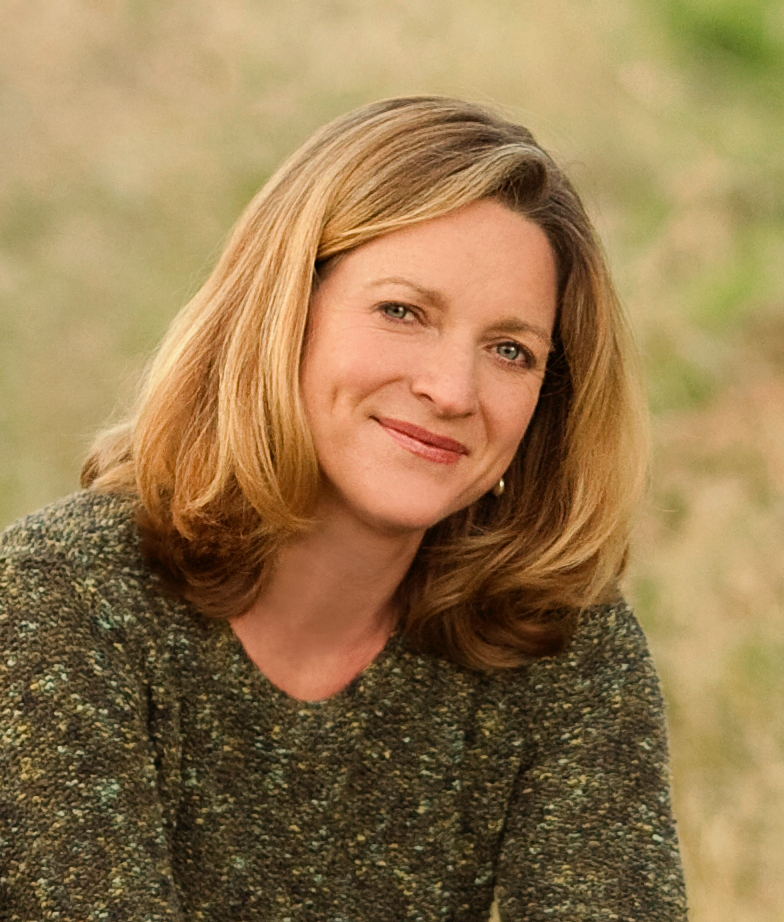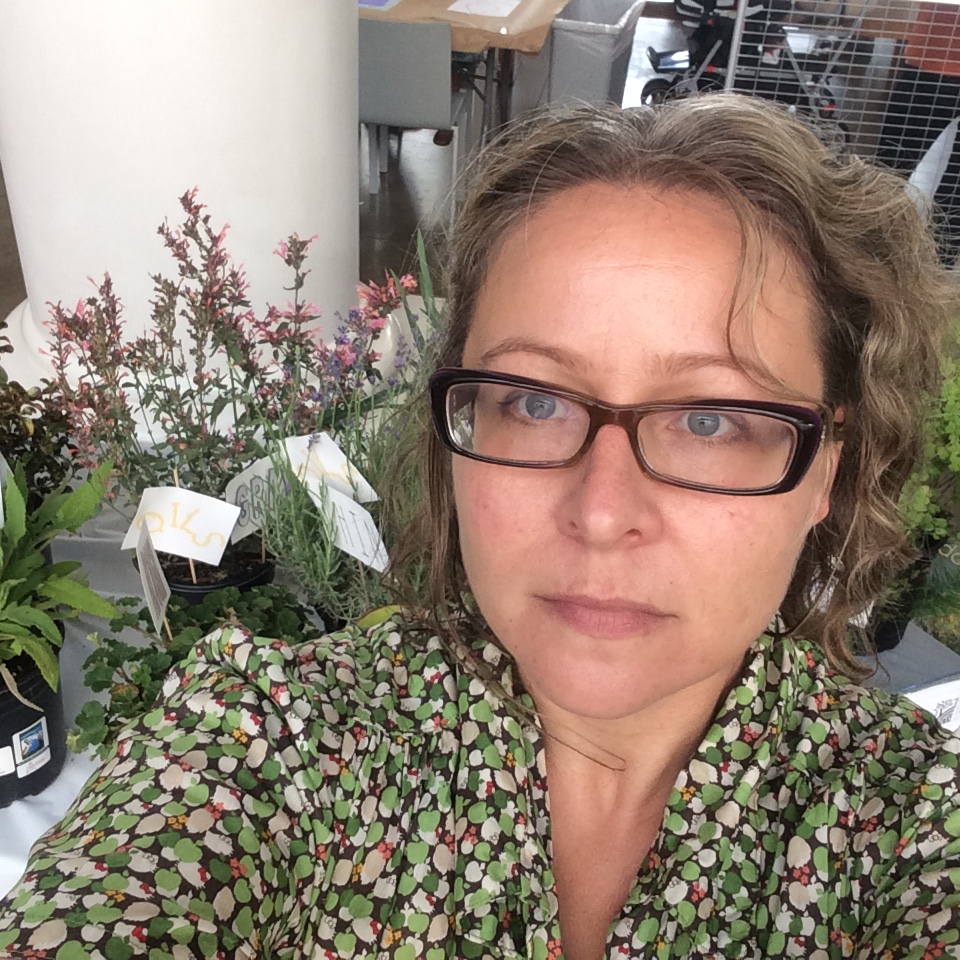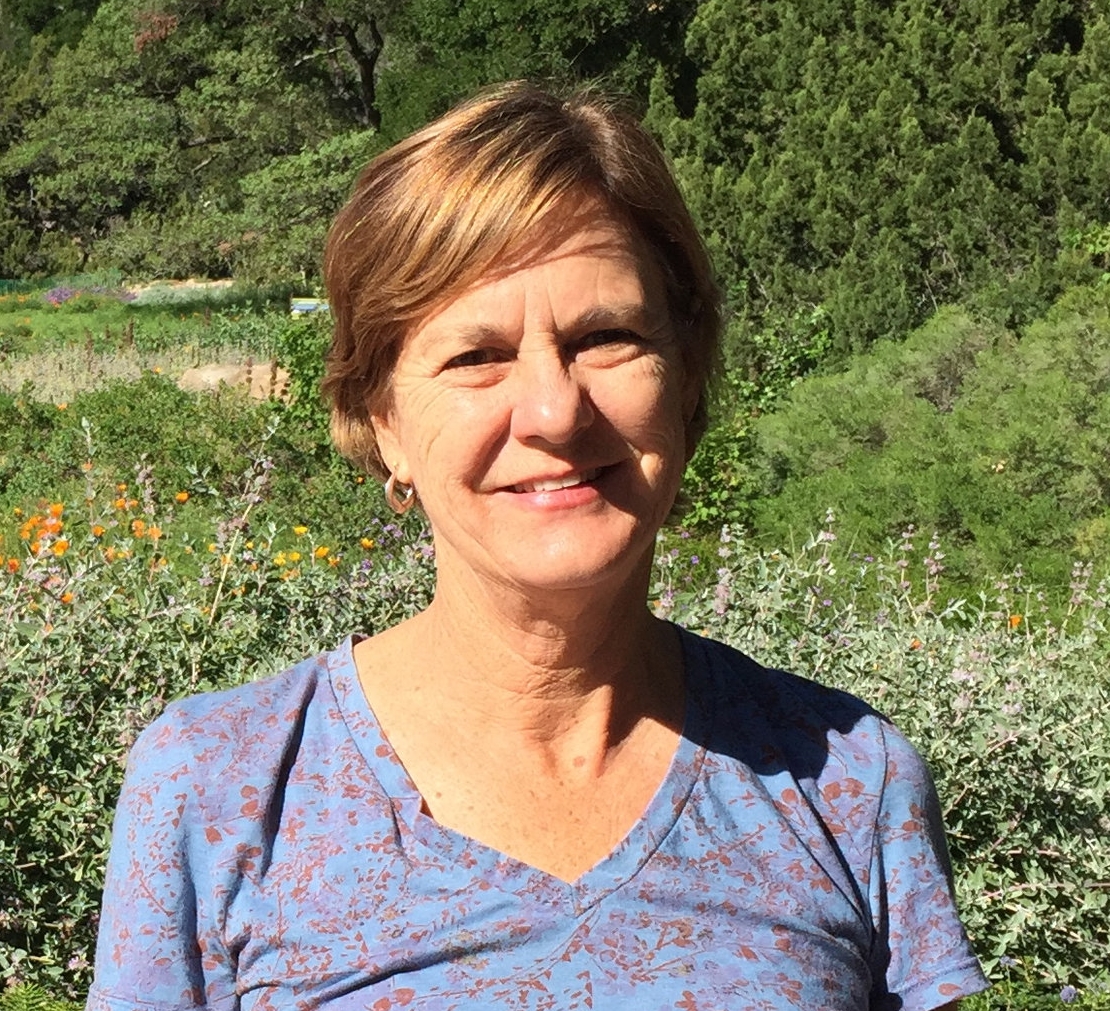Above photo courtesy of Francesca Corra, APLD.
DESIGNER PLANT PICKS:
Members Share Their Current Favorite Plants
As professional landscape designers, we strive to select plants that are adapted to the local climate zone and to use local native plants whenever possible. These low-water workhorses deliver many benefits, and when they do require irrigation, they are able to thrive on low water inputs. For more information about APLD and the watershed approach, please visit our website at apldca.org.
Below you will find the favorite climate appropriate plants of California APLD members.
Tina Henricksen
Tina Henricksen Garden Design, Roseville, CA
APLD Sacramento District Vice President & CA Chapter Secretary
Photo courtesy of Devil Mountain Wholesale Nursery.
Euphorbia ‘Blackbird’
BLACKBIRD SPURGE
"Its beautiful rich, dark purple foliage adds drama and flair to the garden and provides colorful contrast to a planting scheme. ‘Blackbird’ is lovely in and out of flower, but stunning when its red stems sporting bright green bracts open to lime green flowers. It draws the eye and invariably leads to the question, 'what is that plant?!'"
Johanna Woollcott
Wild Gardens, Los Angeles, CA
APLD Greater LA District President
Photo courtesy of Johanna Woollcott.
Dendromecon harfordii
ISLAND BUSH POPPY
"This is a wonderful evergreen native shrub that adds a happy sparkle to any garden! If in full sun it will get to its maximum size. But if in part sun, it will keep an airy open styling that is lovely. The silvery glaucous blue leaves add a wonderful contrast to deep greens and the sunny, clear yellow blooms are noted to be Winter-Spring but I find them constant thru at least 3 seasons!"
David Clarke, APLD
David Clarke Design, San Diego, CA
APLD San Diego District President
Photo courtesy of David Clarke, APLD.
Santolina chamaecyparissus
LAVENDER COTTON
"I use this drought-adapted subshrub as a fragrant border and fill-in plant for Mediterranean style gardens. It spreads fairly easily, has a nice soft gray color and texture, and the summer blossoms are a bright sunny yellow. Very nice with rounded boulders, flagstone, and even birdbaths! Good transition species for rock gardens, too."
Cathy Edger
Edger Landscape Design, Grass Valley, CA
APLD Sacramento District Member
Photo courtesy of Cathy Edger.
Salvia clevelandii ‘Aromas’
AROMAS CLEVELAND SAGE
"This sage has many virtues: once established it needs no supplemental water, has a wonderful fragrance, and statuesque lavender flowers in late spring. It works beautifully in front of darker shrubs and behind other short colorful perennials. For clients who are interested in creating wildlife habitat, wonderful russet- colored spent flower heads need not be deadheaded until it is time for early winter pruning."
Laura Morton, APLD
Laura Morton Design, Los Angeles, CA
APLD Greater Los Angeles District Member & CA Chapter Sponsorship Chair
Photo courtesy of San Marcos Growers.
Grevillea ‘Moonlight’
"I’m loving this as a loose hedge or screening. It’s a lovely change from green to have that silvery lacy foliage and the surprise of such a large creamy flowers. It works so well with Dianellas too."
Martin Carrion van Rijn
Landscape Symphonies, Oregon House, CA
APLD Sacramento District President
Photo courtesy of Devil Mountain Wholesale Nursery.
Rhamnus californica ‘Mound San Bruno’ SAN BRUNO COFFEEBERRY
"This is a tough native shrub that I have used with great effect in several projects. It is very easy going – doing well in sun & shady conditions – and looking nice year round."
Tina Roushall
Roushall Gardens, San Mateo
APLD Bay Area District President
Photo courtesy of Devil Mountain Wholesale Nursery.
Sesleria autumnalis
AUTUMN MOOR GRASS
"Nice evergreen clumping grass, sun or (part) shade, and good substitute for Carex divulsa when a WUCOLS medium water plant can be used."
Michal Commanday
Garden by Michal, Walnut Creek, CA
APLD Bay Area District Member
Photo courtesy of San Marcos Growers.
Melaleuca incana
GREY HONEY MYRTLE
"The weeping habit of this Australian shrub or small tree would make a fine specimen plant, but it also shows nicely in front of coarser, darker foliage shrubs, with its fine grey foliage and poofy little yellow bottle brush-shaped flowers. The deer don’t touch the plant, and it seems to do fine with little or regular water."
Kathleen Olson
Kathleen’s Garden Landscape Design, Lafayette, CA
APLD Bay Area District Member
Photo courtesy of Sunset Western Garden Collection.
Cistus ‘Little Miss Sunshine’
LITTLE MISS SUNSHINE ROCKROSE
"An excellent size for smaller gardens or for repeating in the landscape, with beautiful yellow/chartreuse foliage and a nice, neutral white flower."
BJ Ledgerwood
Native YardScape, Walnut Creek, CA
APLD Bay Area District Member
Photo courtesy of San Marcos Growers.
Fremontodendron californica ‘Dara’s Gold’
FLANNEL BUSH
"I love this plant for dry sunny slopes. Low growing and spreading with handsome evergreen foliage. It flowers in late spring with sporadic blooms during the year. Great composition plant with other California native plants that like zero to occasional watering after the first couple of seasons."
Maryanne Quincy, APLD
Q Gardens Landscape Design, Sunnyvale, CA
APLD Bay Area District Board Secretary
Photo courtesy of Village Nurseries.
Salvia greggii
AUTUMN SAGE
"So many different colors of Salvia greggii’s – blues, purples, reds, pinks and soft yellow. Long bloom that attracts hummingbirds!"
Katie Creighton
Katie Creighton Garden Design, Oakland, CA
APLD Bay Area District Member
Photo courtesy of Devil Mountain Wholesale Nursery.
Grevillea lanigera
‘Coastal Gem’
WOOLLY GREVILLEA
"This evergreen plant has a unique texture and shape, adding interest to the garden year round, but especially in winter/early spring when it blooms its head off with tiny pink curly cue flowers. It can be used to cover open hillsides, or as one-of-a-kind in smaller gardens. Loves sun and very drought tolerant."
Kristin Caldwell
Kristin Caldwell Garden Design, Moraga, CA
APLD Bay Area District Member
Photo courtesy of San Marcos Growers.
Cotyledon orbiculata var. oblonga ‘Flavida’
FINGER ALOE
"I like this plant because of its interesting texture (think finger grass) and white chalky leaf color. The coral orange bloom stands out amongst the foliage in spring and so easy to cut off some stems and start in other parts of the garden."
Anna Wendorf
Anna Wendorf Design, Concord, CA
APLD Bay Area District Special Events Chair
Photo courtesy of Devil Mountain Wholesale Nursery.
Ceanothus 'Valley Violet'
VALLEY VIOLET WILD LILAC
"Ceanothus is often too large for the average garden. This one stays compact at 2'x4', and blooms profusely."
Laura Henry Kukulski
Laura Henry Design, Oakland, CA
APLD Bay Area District Communications Chair
Photo courtesy of Devil Mountain Wholesale Nursery.
Leucadendron ‘Ebony’
EBONY CONEBUSH
"This 4’x5’ shrub has beautiful black/burgundy foliage and standout red bracts. It can be used as a specimen or to create a dark background for brighter plants. This should be a go-to plant for all your goth garden designs."
John Black
Verdance Landscape Design, Palo Alto, CA
APLD Bay Area District Member
Photo courtesy of Devil Mountain Wholesale Nursery.
Agave x ‘Blue Glow’
BLUE GLOW AGAVE
"I love this Agave for its compact form, the red edging on its blue-gray leaves, and the fact that it needs almost no water but won’t sulk in a garden setting either."
Patricia St. John, APLD
St. John Landscapes, Berkeley, CA
APLD Bay Area District Member
Photo courtesy of Devil Mountain Wholesale Nursery.
Arctotis ‘Ruby Creeper’
RUBY CREEPER AFRICAN DAISY
"This Arctotis, with its magenta/ruby daisy-like flowers, creeps along the ground about 1’ high and 2-3’ wide. It’s evergreen foliage is a grey-green tomentose lobed leaf that looks good year round—great for a parking strip mixed with Gazania and grey festucas."
TOOLS AND TIPS:
An Urban Meadow Garden
by Jonathan Harnish
InSite Landscape Design
APLD Greater Los Angeles District Member
In designing this sustainable urban meadow garden in the Cheviot Hills neighborhood of Los Angeles, my goal was to transform a desolate front yard lawn into a low-maintenance, naturalistic space that conserves water, provides valuable habitat for beneficial pollinators, and offers captivating aesthetic appeal.
While meadow-style planting may appear spontaneous and haphazard, this meadow garden is organized with a series of carefully choreographed transitions and combinations of ornamental grasses and flowering perennials that create defined spaces within the garden. These spaces—each with their own distinct character and design intent—are both separated and unified by a serpentine drift of Carex pansa that meanders throughout the garden and produces negative space.
In developing the plant palette for this garden, I considered several factors, including the site topography, location, background elements, and lighting. To account for the relatively small scale of the space and low-maintenance requirements, I selected shrubs that generally don’t grow too large and can be layered well with grasses and groundcover. Aesthetically, I choose to make this simple, yet complex meadow more readable by limiting the foliage and flower color scheme to shades of purple, green, gray, and white. I also selected plants with seasonal interest that interact well with wind, light, and shadow.
In particular, the non-invasive Pennisetum ‘Fairy Tales’ cultivar provides stunning late afternoon interest in the spring and summer, when the backlighting of the sun makes its abundant foxtails glow like candles. Likewise, Salvia ‘Mystic Spires Blue’ blooms nearly year-round in Southern California and produces vivid deep blue upright blooms that rhythmically undulate in the wind and shimmer in the late afternoon light, especially when massed and layered with complimentary plants sharing similar form, such as Lavandula ‘Goodwin Creek’.
To help attract native pollinators—particularly birds and butterflies—I integrated California native flowering perennials, such as Achillea millefolium and Verbena iliciana ‘De La Mina’, and seed-producing sedges, including Carex tumulicola and Carex pansa.
Photos courtesy of Jonathan Harnish.
URBAN MEADOW GARDEN PLANT LIST
BLOOMING PERENNNIALS
Salvia ‘Mystic Spires’ MYSTIC SPIRES BLUE SAGE
Lavandula angustifolia ‘Munstead’ MUNSTEAD ENGLISH LAVENDER
Lavandula ‘Goodwin Creek’ GOODWIN CREEK GRAY LAVENDER
Lavandula stoechas ‘Otto Quast’ OTTO QUAST SPANISH LAVENDER
Verbena lilicina ‘De La Mina’ CEDROS ISLAND VERBENA
ORNAMENTAL GRASSES
Carex pansa CA MEADOW SEDGE
Carex tumulicola FOOTHILL SEDGE
Pennisetum ‘Fairy Tales’ EVERGREEN FOUNTAIN GRASS
Pennisetum ‘Little Bunny’ LITTLE BUNNY DWARF FOUNTAIN GRASS
GROUNDCOVERS
Cerastium tomentosum SNOW-IN-SUMMER
Achillea millefolium COMMON YARROW
Nepeta fasssenii ‘Walker’s Low’ WALKER’S LOW CATMINT
FOCUS ON FLORA:
Useful Plant Lists for Special Situations
by Suzanne Arca, APLD, ASLA, CLCA
Arca Design Group, Albany, CA
APLD Bay Area District Member
Plants We Love to Espalier
For nearly 40 years Suzanne Arca has been designing, building and maintaining beautiful residential and commercial landscapes in the San Francisco Bay Area. Suzanne has shared her knowledge with others as a lecturer at Merritt College and the UC Extension Landscape Architecture Department.
Suzanne’s desire to make the most of every square inch of planting space in the many small urban gardens she has designed, lead her to experiment with the ancient art of espalier (training woody plants against a flat surface). Here are a few of her favorite plants to espalier.
by Yael Ehrenberg Hellion
verde360, San Francisco, CA
APLD Bay Area District Member
Green Density for Wall Gardens
Yael Ehrenberg Hellion is the co-founder and principal designer for Verde360, a landscape design firm in San Francisco and Mexico City. In 2007, together with two friends, an architect and an industrial designer, she started her own landscape design and build studio in Mexico City, specializing in vertical gardens. In the last ten years their studio, Verde360, has produced a great number of vertical gardens ranging in sizes from 64 sf to 30,000 sf.
"I can say it is a challenge to create a dynamic design with plants of different textures, colors and growth habits in the same artificial environment on a vertical plane. But I have found out that there are plants which spread and grow more easily on a green wall and that are very helpful to use in combination with other accent plants to create "green density" and to fill in spaces on the vertical garden that otherwise would look more sparse. I came up with a list of some of my favorite plants for green walls here in California, many of which I have also used in my projects in Mexico. "
by Cynthia Tanyan
Mozaic Landscapes, Sunol, CA
APLD Bay Area District Member
The Toughest of the Tough: Plants for Greenroofs
For 20 years, Cynthia Tanyan has designed over 500 varied residential gardens throughout the SF Bay Area and beyond, including a master plan for a Stanford Lands horsepark, a rural cemetery in Massachusetts, a Native American sculpture garden, and an extensive modern greenroof.
Cynthia's designs have been featured in Sunset (she is a recipient of Sunset's "Best in the West" and "Dream Gardens" Award) and People magazine. Her designs can be seen in The American Meadow Garden, by J. Greenlee (c.2009), and Reimagining the California Lawn, by C. Bornstein.
"Greenroofs are tough environments for plants as they are usually exposed to all-day sun, wind, drought conditions and have only a shallow root zone. This is similar to native conditions for many rock garden and succulent plants. Sedums of all kinds are the mainstay for greenroofs. Choose plants that are tough, stay fairly low to the ground, and don’t require much deadheading or other maintenance."
by Marilee Kuhlmann
Urban Water Group, Inc., Santa Monica, CA
APLD Greater Los Angeles District Member at Large
Beyond Juncus: Fresh Planting Ideas for
Rain Gardens
Marilee Kuhlmann has committed herself to improving the landscape of Los Angeles. She sees potential, applies alternative, responsible, sustainable principles and develops projects that consider land stewardship, potential local impact, water conservation, soil health, and the overall environment. She has participated in award-winning rainwater harvesting projects, LEED projects, water conservation demonstration gardens for public agencies and gardens funded by Santa Monica Sustainable Landscape Grants. As President of Urban Water Group, Inc. she oversees the design, budgeting and construction management of each project, drawing on her expertise in rain water harvesting, infiltration systems, LID (Low Impact Development) Best Management Practices, climate appropriate planting, and efficient use of potable and alternative water sources.
"Plants that can thrive in swales or rain garden are plants that I’ve been hunting down for a few years now. It’s not functional or aesthetically pleasing to my eye to fill a rain garden or swale with rocks or gravel, over time if a swale or rain garden doesn’t have plant roots, it will not drain as effectively as it will with roots to keep the soil open and stable and the biological activity in the soil thriving. But only gradually has my swale plant list grown. The list is constantly being edited—sometimes expanding, sometimes shrinking—as a result of testing prove that a plant doesn’t like the conditions of particular area."
by Linda McKendry
Linda McKendry Garden Design, Hidden Hills, CA
APLD Greater Los Angeles District Member
Roses Worthy of a Second Look
A long time rosarian, Linda McKendry was mentored by Jan Weverka, 'the Rose Lady', who wrote a newsletter about growing roses using organic methods and had her own formula of organic elixir, which Linda still uses.
Linda studied horticulture and garden design at Pierce College, UCLA and the LA Arboretum. Now Linda runs a comprehensive landscape design and rose care business in Hidden Hills. She was a founder of the APLD Greater LA District and served on its board for seven years. She now is a board member for Pacific Horticulture and leads horticultural tours around the world for them.
Linda offers a list of her favorite rugged, heavy blooming roses that have performed well in many of her projects in Southern California.
by Tricia Christopher
Tricia Christopher: Landscape Architect, Oakland, CA
APLD Bay Area District Member
The Green Backdrop
Tricia Christopher is a licensed landscape architect with over thirty-five years of professional experience designing landscapes in the San Francisco Bay Area. Specializing in residential gardens, she has also worked with her Oakland community on school and public gardens and has taught landscape design courses for many years at Merritt College. She holds a Master’s degree in Landscape Architecture from the University of California, Berkeley and an undergraduate degree in Plant Science from the University of Delaware. She enjoys combining her love of plants with the creative side of designing outdoor environments.
"Don’t forget the power of green! Quite often, evergreen plantings are needed in supporting roles or background locations, especially in smaller gardens with views of fences or buildings. These are the oft-unnoticed workhorses that serve to show off the more colorful or unusual specimens that get all the attention. They need to be versatile, reliable and low maintenance. Listed below are plants that can be used as screens, hedges, fence coverings, or massed in groups to provide soothing green to the garden."
by John Greenlee
Greenlee and Associates, Brisbane, CA
APLD Bay Area District Member
Up and Coming Grasses
An expert in grass ecology and champion of sustainable design, John Greenlee has made meadows all around the world. His designs are featured at such notable public spaces as the San Diego Zoo, Disney's Animal Kingdom in Florida, and the Getty Center in Los Angeles. John Greenlee has also created beautiful meadows gardens in private residences all over California, the U.S., including Hawaii, Morocco, the United Kingdom and Saudi Arabia.
Long known as the “grass guy” in California, John Greenlee shares a list of some lesser known grasses that have great potential and are worth trying.
BOOK REVIEW:
Garden Revolution: How Our Landscapes
Can Be a Source of Environmental Change
by Larry Weaner and Thomas Christopher
Reviewed by Francesca Corra, APLD
APLD California Chapter President
I wanted to read Garden Revolution: How Our Landscapes Can Be a Source of Environmental Change because Thomas Rainer, when speaking at the recent “A River Runs Through It” seminar in Los Angeles, mentioned Larry Weaner with such enthusiasm that I made a note of it and immediately afterwards ordered his book. I then discovered that Larry Weaner would be one of the speakers at the upcoming APLD International Design Conference in Toronto.
In the interest of complete disclosure, I have not read every word in the book. The book is packed full of decades worth of experience, shared freely and in generous detail. After first skimming through, I decided that it would be perfectly fine for me to read some sections now and save others for when I may need them.
The primary reasons that the authors gave for writing the book are to give us the resources to create landscapes that are easier to manage, more ecologically beneficial, and reflective of the plant compositions of our respective regions (i.e. natives).
The authors discuss gardening as a “process” and the garden as an “ecosystem”. We are encouraged to ride and guide the wave of natural plant succession—instead of constantly battling it—and to collaborate with the landscape to reduce time-consuming practices. Although the book deals mainly with east coast plants and large areas, there are still plenty of takeaway gems to make it a worthwhile read in other locales. For instance, in discussing Site Analysis, the authors mention creating borders for wildlife corridors, which is something that might elude us in our normal practices. Throughout discussions of ecological design, good and sound design principles shine through.
Weaner and Christopher introduce a novel way of designing with “niches”, both spatial and seasonal. I will leave you to discover this for yourselves.
It is an engaging read, and a book to save as a resource. I look forward to hearing Larry speak at the conference.




























































